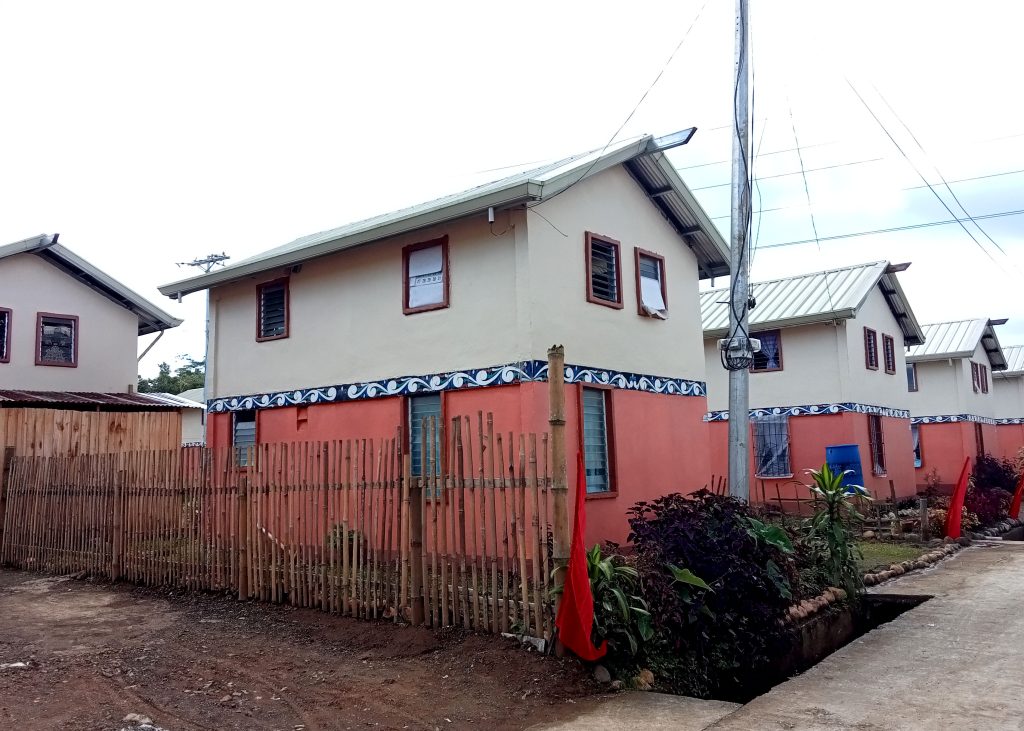For Anisah Bariga, a 38-year-old mother of nine, life in the past five years after the shooting war in the southern Philippine city of Marawi was much better than before the 2017 conflict.
Bariga and her nine children, including a five-month old baby, are among the families now occupying one of the 109 permanent houses built by the United Nations Human Settlements Programme (UN-Habitat) in the village of Hadiya in Marawi.
The UN agency constructed 1,000 permanent shelters for displaced families who could no longer go back to their homes in the city’s “most affected area.”
The building of the shelters was funded by a US$10-million donation by the Japanese government for the “Rebuilding Marawi Project.”
In February last year, Bariga and her family transferred to the shelter, calling it “our own house,” after staying with relatives four kilometers away.
During the war, Bariga and her children stayed for six months in a public school that served as evacuation center in the town of Saguiaran in Lanao del Sur province.
“It was very difficult living in an evacuation center with six little children,” she said.
After the liberation of the city from armed extremists, she asked a relative if she and her children could stay in their house.
“They let me stay there for free while waiting for the opportunity to be given permanent housing,” said Bariga who said she already accepted that her family could no longer go back to their former home.
The government has declared several areas in the city as “no-build zones” and “danger zones,” especially those in the reclamation area on the banks of the rivers.
At Hadiya Village, Bariga said her family has comfortably settled in a 42-square-meter house on a 100-square-meter lot.
The couple sells “dodol,” a Maranaw delicacy. A friend allowed Bariga and her husband to construct a bamboo shed along the road where they could sell the “dodol.”
“Our house before the siege was smaller than this,” she told LiCAS News. “We also have a better income here because there’s a lot of commuters passing by our place.”

Worries remain
Taib Gauraki, another displaced resident, was also provided a new house in Hadiya, but unlike Bariga, Gauraki is worried about the ownership of the land where his new home now stands.
He learned that the government has only paid 25 percent of the price of land, which has a total area of 2.8 hectares. He is worried about the lack of assurance that indeed the people have rights to the land.
“They said this is a permanent shelter, but how long will we wait for the government to totally pay for it,” he said, adding that it is important that the land will be fully paid by the government.
Felmar Gilbang, project manager of the Social Housing Finance Corporation (SHFC), assured that the people will not be evicted from the area.
He said the heirs of the land owner have already issued a conditional deed of sale after receiving the initial amount from the government.
“There are already certificates of award that were given to the homeowners,” said Gilbang.
Meanwhile, Marawi Mayor Majul Gandamra said 1,000 of the more than 3,000 families who are still living in transitory shelters were already relocated to permanent houses in five areas in the city.
The SHFC and the National Housing Authority have already purchased the lands, said the mayor.
The mayor, however, said about 2,000 more families living in transitory shelters are yet to go back to the city to rebuild their houses in the so-called “most affected area.”
“Many of them are waiting for compensation as stated in the newly-approved Marawi Compensation Law,” said Gandamra.

Abduljalil Madid, president of the homeowners association in Hadiya Village, said they too want to get an assurance that they will receive compensation from the government even after being awarded new homes.
“We hope that the next administration will continue to support us like what [President Rodrigo Duterte] did,” he said.
On May 30, the UN-Habitat will wrap up its Marawi Resettlement Site projects.
In the course of its four-year engagement in the city, 1,000 permanent houses were turned over to internally displaced families affected by the conflict in 2017 on May 19.
Aside from the core shelter project, the UN-Habitat also engaged in livelihood skills training, community development projects, peace structures, mapping, and the building of community infrastructures.
As of May 2022, at least 923 houses have been completed in the area while 77 are for completion next month. Of these, 538 were already turned over to displaced families.
“The Rebuilding Marawi Project demonstrates that adequate housing is at the center of sustainable development,” said Christopher Rollo, country program manager of UN-Habitat Philippines.









